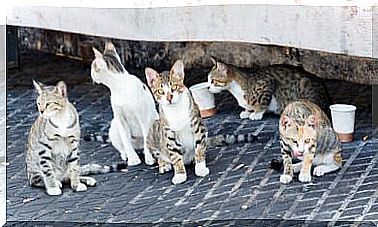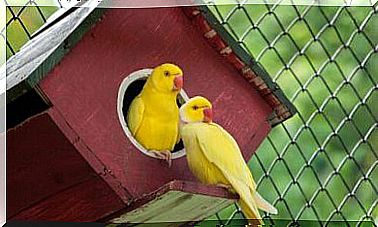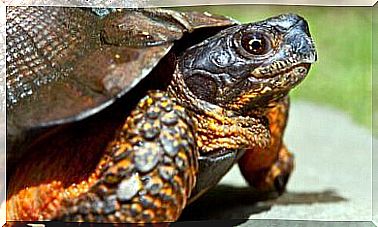Mockingbird, The Bird That Imitates The Song Of Other Species
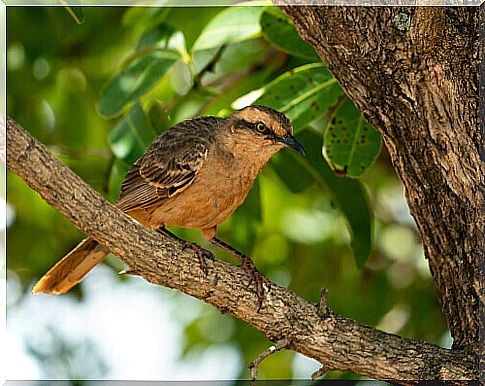
There is a bird whose scientific name indicates the ability to “copy” from other species. In fact, the northern mime, commonly called mocking thrush, which inhabits North America, is able to imitate the song of other species. Read on if you want to know more about this bird.
The mocking thrush: history of the name
We must go back to the 19th century to find the first evidence indicating the presence of the mocking thrush. In 1823, the German zoologist and naturalist Martin Carl Lichtenstein described this bird. However, mistakenly, he “baptized” it with another official name and grouped it into the thrush family.
Three years later, it was another German zoologist who definitively established the genus Mimidae and included the mocking thrush within it. Currently, the genus Mimidae includes a total of 14 species of passerines, most of which are distributed on the American continent.
General characteristics
We are facing the largest specimen of the genus Mimidae : these birds measure between 25 and 27 centimeters when they reach adulthood. Its plumage has a very characteristic color, with earthy and brown tones that prevail over lighter tones.
The back is brown, with some darker plumage lines, and its wings are black with some white patterns. The part that goes from the throat to the end of the belly is a little lighter, but always maintaining the earth tones that distinguish it. The long tail of the mocking thrush stands out, with characteristic white spots that can be seen when the bird is in flight.
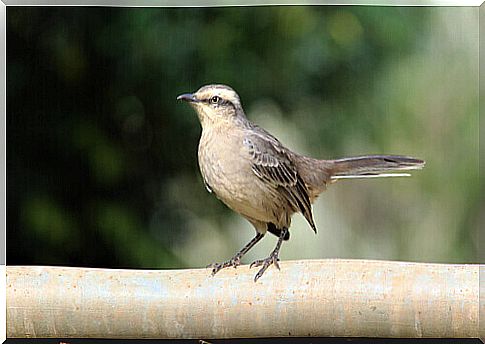
The mocking thrush has relatively long legs, which indicates that this species has adapted to walking for long periods, as it spends much of the day on the ground. Its beak has also undergone adaptations: it is strong and elongated. These traits meet the needs of the diet, as they use their beaks to catch insects.
Feeding and singing of the mocking thrush
These birds have an insectivorous and frugivorous diet. This means that some of their food is made up of insects and larvae, which they supplement with some small wild fruits. Aside from that, they can also feed on meat, so we can say that they have a rather diverse diet.
The song of the mocking thrush is one of its peculiarities : they are excellent songbirds. Their singing is pleasant and easily recognizable, plus they have the ability to mimic the song of other birds with incredible precision. Likewise, they can learn and even mimic the sounds around them, however diverse and varied they may be.
Distribution and conservation
The territory of the mocking thrush is South America. Thanks to its wide distribution, it is easy to observe it in territories such as Argentina, Paraguay, Bolivia or Brazil. Its habitat is very diverse, including grasslands and steppes, but also urban landscapes such as gardens.
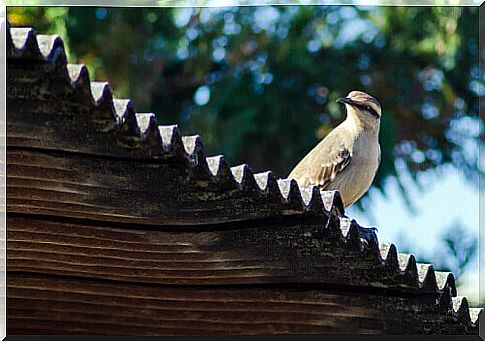
When they nest, they nest in trees or shrubs, and the female will hatch the eggs. They are birds that defend their nest from any aggressor, so they can become aggressive with unwanted intruders. On some occasions, they have been seen flying very close to other much larger animals, to warn them not to approach.
The International Union for Conservation of Nature (IUCN), thanks to the wide range of distribution and the large number of specimens, classifies the mockingbird in the section of “least concern” worldwide. This category ensures that the species is not threatened and that its disappearance in the short and medium term is excluded.


